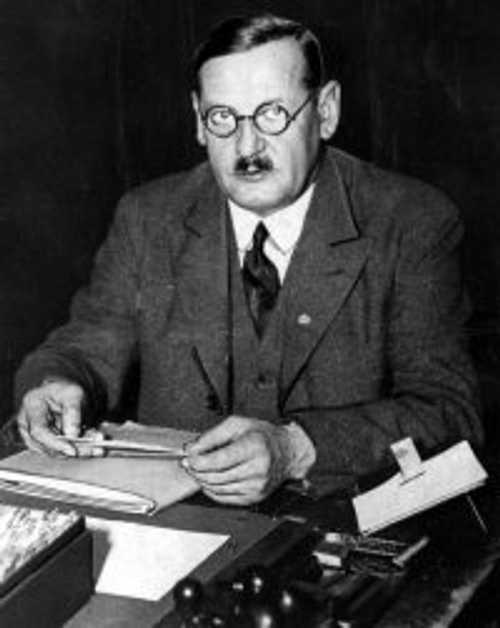
German Leadership
The first Nazi.
Anton Drexler at his desk. Drexler was a locksmith by trade, and a labour activist. His politics, however, were of a storng Nationalist/Volkisch slant, and wrote poetry in that cultural nationalist tradition. He was rejected for service in WW1 on fitness grounds (among other things, his eyesight left a lot to be desired). In the immediate aftermath of the war, he joined with fellow Volkisch "intellectuals" Gottfried Feder and Dietrich Eckhart (the latter was a member of the Thule Society, an occultist secret society of which Rudolf Hess was also a member) to form the German Worker's Party (DAP). The initial tone of the new Party might be described as a Volkisch precursor of later "Left Naziism". The Party remained a tiny, insignificant far-Right group until one of its meetings was attended by an Army intelligence informer, who soon became Party Member No. 54 - Adolf Hitler. Soon, the DAP began to make a mark, borne upwards by Hitler's oratory, some Army intelligence slush-funding (obtained though one of Hitler's military handlers, Ernst Rohm) and covert support from the spookies of the Thule Society. Since Hitler was clearly the Party's star asset, his influence in the movement grew in proportion to its strength. Hitler soon persuaded Party leader Drexler to change the Party's name to National Socialist German Workers' Party (NSDAP). The "National Socialist" tag reflected a continued projection of "Left Nationalism", a stance which (apart from the fact tha it chimed with the views of Drexler and Feder in particular) was calculated to appeal to workers (or would-be workers), including ex-soldiers, who were attracted by policies suggesting wealth redistribution. Thus, the first Party Programme - the "25 Points", of February, 1920, mixed xenophobic nationalism, racism and non-Internationalist socialism in a cocktail designed to lure the workers away from Socialist and Communist competitors. By late-1921, Hitler's pre-eminent influence in the Party was sufficiently apparent to prompt him to challenge Drexler for the leadership, a challenge that (not surprisingly) proved successful. Drexler's Party membership lapsed when the NSDAP was outlawed following the Beer Hall Putsch; he pursued his political interests in other Right-wing groups before rejoining the Nazi Party following Hitler's accession to power. However, apart from being afforded some honours by the Party (he was awarded the Blood Order in 1934, although he had not taken part in the Putsch), and being employed to a limited extent for propaganda purposes, Drexler was never again a person of influence in the movement he had founded. He died of natural causes in Munich in 1942. It is a measure of the political insignificance to which he had sunk that he was allowed to die of natural causes; more substantial "Left Nazi" figures, such as Ernst Rohm and Gregor Strasser, were not so lucky. Best regards, JR.
3812 Views
12/13/2012
